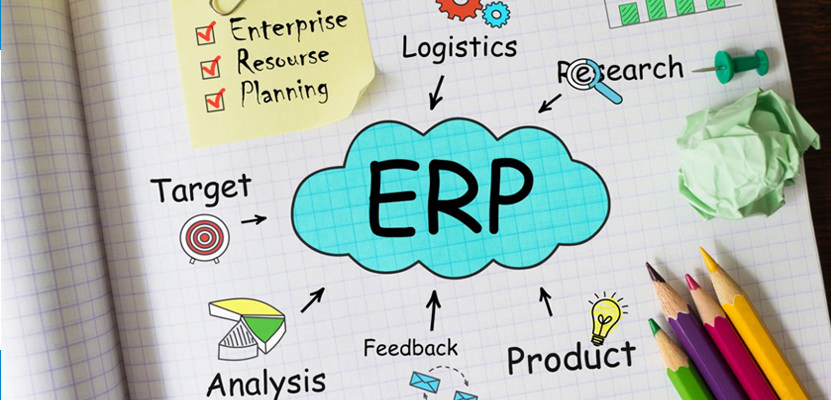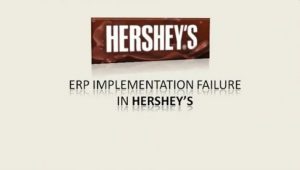ERP Implementation Mistakes – According to reports, up to 75% of all Enterprise Resource Planning deployments fail. That’s over half! Implementing an ERP system should go reasonably quickly in the hands of ERP Consulting specialists. Without a glitch, your data is imported, and inventory, financial management records, and other integrations are transmitted quickly and efficiently.
Many businesses, on the other hand, are not so fortunate. Some of the world’s most known companies have suffered from failed ERP Implementation Services, with terrible effects.
Today, we’ll look at five major ERP installation disasters and why they failed.
1. Waste Management ERP Failure – A $500 Million Loss!
In 2008, Waste Management filed a lawsuit against SAP, bringing the firm to public prominence. SAP was accused in the case of giving a software prototype that had been changed to seem fully functioning.
Waste Management initially claimed losses of $100 million due to both implementation expenses and income loss. They eventually increased that figure to $500 million. Both parties would reach an out-of-court settlement two years after the first case.
What caused Waste Management to fail? They did not thoroughly research the program they selected. This instance highlights the need to conduct due diligence when evaluating an ERP provider’s ability to deliver on its claims.
2. Lidl’s ERP Implementation Mistakes – Took 7 Years Complete!
In 2011, the German supermarket operator Lidl collaborated with SAP to create an updated inventory management system. Unfortunately for Lidl, their one-of-a-kind record-keeping technique put a wrench in the works. It caused various complications during the implementation process.
Over $580 million and seven years of hard work took a nosedive. After spending time and effort, Lidl reverted to its previous in-house inventory management system.
What caused Lidl to fail? Lidl’s demise was primarily due to project-scope incompatibilities. The supermarket chain refused to make the necessary changes to its existing procedures. As a result, they were unable to integrate SAP’s new technology.
3. US Navy ERP Implementation – Took 7 Years Complete!
From 1998 through 2005, the US Navy attempted — and failed — four times to implement a functional Enterprise Resource Planning System. According to a Government Accountability Office investigation, the ERP systems’ limited breadth and redundancy did not meet Navy standards.
The overall cost of the four projects was one billion dollars. Finally, the Navy collaborated with SAP to create a consolidated system. A single SAP application replaced three of the four ERPs.
What caused U.S. Navy to fail? The Navy’s blunders demonstrate that an ERP with a too-small scope may be detrimental to one with a too extensive range. To discover the correct fit, stakeholders must scale their criteria to match their genuine business needs.
4. Nike ERP Malfunction – A loss In Sales Worth $500 Million!
Nike was the most recognizable brand in the shoe market at the turn of the twenty-first century. To maintain its market leadership, the firm collaborated with i2 Technologies to create an ERP Software Services system for its capacity management operations. However, Nike’s leadership hurried the timeline, and their new ERP went live with serious faults, crippling the company’s capacity to sell its primary product – Air Jordans.
As a result of missed sales and project costs and multiple lawsuits stemming from unfilled orders, a total loss of $500 million was incurred. In 2003, they switched to a more powerful SAP ERP system.
What caused Nike to fail? Nike’s unrealistic deadline caused its ERP Implementation Mistakes to erupt, resulting in a significant downturn in the economy.
5. HP’s ERP Migration – A Sales Decline Worth $160 Million!
In 2004, computer hardware behemoth HP attempted to transition one of its significant divisions to an SAP Enterprise Resource Planning System. The company’s IT division has already successfully migrated five of HP’s other production arms onto SAP systems, with backup plans to assist. Regrettably, their contingency plans were insufficient to save them; their supply chain could not keep up with the backlog of orders caused by bugs in the new system.
HP lost $160 million in sales due to the $30 million migration, which resulted in a $120 million order pileup and $40 million in revenue losses. The following year, they decreased their losses and resolved their supply chain and ERP challenges.
What caused HP to fail? Their CIO criticized their implementation team, claiming concerns like silos not being crossed and poor manual input processes.
There is no secret to avoiding Enterprise Resource Planning blunders of the past: understand mistakes that lead to failure and avoid repeating them. Looking back and learning from personal failures is helpful. Still, it is preferable to learn from the past experiences of others to prevent the anguish of repeating their blunders. The five real-world examples provided should assist you in doing so.
Keep in mind that Connected IT Consulting‘s software selection programs are based on a tried-and-true software evaluation and selection methodology that leads to effective ERP Software adoption while avoiding costly problems.
Also Read :



